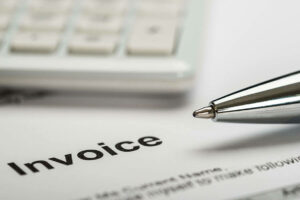We’ll proactively provide bookkeeping updates catered to your veterinary practice. Our team of experts is well-versed in the financial nuances of the veterinary industry and will tailor their approach to suit your practice’s specific needs. Kutz & Company, CPAs goal is to help you reach your financial goals and maintain financial independence through a comfortable retirement. Whether you are developing an investment strategy or evaluating current investments, Kutz & Company, CPAs can ensure that your portfolio will take into account tax implications for an advantageous after-tax return. The road to retirement is a long one and we can help you to take the proper steps to reach your goals. Kutz & Company, CPAs provides a wide range of services to individuals and businesses in a variety of industries.
Navigating Regulatory Changes and Industry Challenges
Proper accounting for veterinarians can make bookkeeping tasks more manageable and less stressful. The professionals at Accountor CPA are your trustworthy local veterinarian accounting specialists. We have years of industry experience, so your vet clinic is in good hands with our CPA experts. Good bookkeeping can also help a veterinary practice avoid potential financial pitfalls and legal problems. Consider investing in accounting software like QuickBooks or Xero that caters to small businesses. These tools can streamline bookkeeping tasks, track income and expenses, and generate financial reports.
See where you’re spending. Make smart decisions
Then, help you make the money moves you need to scale quickly while maintaining business sustainability. Each month, your dedicated bookkeeper arranges your veterinary clinic’s transactions and compiles financial reports. If they require any further information from you, they will promptly make contact. Trust your bookkeeping, income tax prep, and filing to the experts — driven by one powerful platform. Just as the well-being of the animals you treat is the focus of your business, at Chandler & Knowles, the health and well-being of your business and its finances is the focus of ours. Having the right people in the right places provides the peace of mind that comes with knowing that the business side of your practice is being run smoothly, efficiently, and profitably.
Clients Benefit From Using Accountor CPA’s Vet Bookkeeping and Accounting
From there, we offer customized strategies based on your current situation and future goals. Outsourcing bookkeeping and accounting services allows veterinarians to focus on their core expertise of providing quality care to animal patients, freeing up time that would have been spent managing financial tasks. Delivering quality care to patients is just one aspect of managing a veterinary practice. https://www.bookstime.com/ It requires an understanding of the financial health of the practice, and this is where veterinary CPAs come in. With services like financial planning, business analysis, and system enhancements, CPAs provide essential insights into profitability, cash flows, and budgets. When it comes to accounting software for a Veterinary Clinic business, both QuickBooks and Xero are standout options.
- Additionally, specialized accounting software can make your financial tasks easier with automation.
- In addition, we provide continuous financial analysis and reporting to help you evaluate your practice, to identify new opportunities and areas for growth, and improve efficiency and profitability.
- We are ready and willing to answer any and all questions the IRS may be asking of you.
- Your bookkeeper will be your main point of contact, but at times you might hear from another member of your team.
- We make it a point to keep current with market trends and updates so that your business can be prepared for what is to come.
- The veterinarian has a different type of working pattern compared to the other types of organization.
- Let us take these important tasks off your plate and design a coordinating tax plan to maximize revenues while you focus on the daily operations of your business.
- Delivering quality care to patients is just one aspect of managing a veterinary practice.
- Choosing the best veterinary CPA is easy when you use Accountor CPA’s experts.
- Its integration capabilities with veterinary-specific apps streamline clinic operations, ensuring efficient patient record management.
- Managing finances in a veterinary practice goes beyond basic bookkeeping.
- Our outsourced bookkeeping & CFO services are available anywhere in or outside of Wisconsin.
If you have been chosen for an audit, the professional representation you can find with our firm can put many of your worries at bay. We are ready and willing to answer any and all questions the IRS may be asking of you. Reviews provide limited assurance to outside interests and involve inquiries and analytical procedures that confirm financial statement matters and identify any items requiring further analysis.
Invest in Accounting Software:
Yes, you can trust us with your sensitive data and to deliver accurate, timely accounting services for your business. Payroll management is a key service of veterinary CPAs, ensuring accuracy in recording team wages and benefits, which forms a critical part of the financial health of a veterinary practice. Managing accounts payable is another significant service offered, which includes tax return purposes, bill paying, and financial statement services. Cash flow is the lifeblood of any business, and veterinary practices are no exception.

Accountor CPA experts have industry experience in vet bookkeeping to help you maximize your business potential. From adjusting processes to finding hidden tax deductions, we are here to ensure your bookkeeping for veterinarians business uses proper accounting methods. VetBooks is a bookkeeping service designed to help veterinarians improve their practice by enabling them to better understand and manage their finances.
Our outsourced bookkeeping & CFO services are available anywhere in or outside of Wisconsin. From our offices in Milwaukee, Madison and Brookfield we primarily serve businesses located in and around Milwaukee, Dane, Ozaukee, Washington and Waukesha counties. In larger organizations, financial record-keeping and reporting is handled by a team of people. The benefit of working with the Giersch Group is getting that same team approach and level of attention, at a reasonable price. Accurate bookkeeping can be confusing when operating a thriving vet business with many branches. Thankfully, we know the complexities of businesses operating across several locations.
How to get started with bookkeeping and accounting for veterinarians in the USA?
- Cook CPA is committed to providing consulting, accounting, tax and auditing services that distinguish our common sense, uncommon service approach from any other CPA firms.
- We’ll proactively provide bookkeeping updates catered to your veterinary practice.
- Our professionals at Accountor CPA have the skills and knowledge to handle individual and business tax filings.
- We team up with prominent vendors like Gusto, Stripe, Shopify, and Square—ensuring the financial record-keeping for your veterinary practice is always spot-on.
- As a QuickBooks® Online Certified ProAdvisor, we can also assist with installation, setup, support and training.
- Kutz & Company, CPAs role is to help you navigate the complex and shifting tax laws to facilitate the transfer of assets and minimize the tax liability of your beneficiaries.
Better financial management and a more streamlined process is the key to making business decisions confidently. Fauna Accounting specializes in veterinary bookkeeping, veterinary practice consulting, and tax preparation for vets. As a practicing veterinarian and business owner, you have a multitude of tasks to address on a daily basis. In addition to providing services to your clients and their pets or livestock, you must also oversee the day-to-day operations of a veterinary practice.

At Bench, we offer expert and personalized online bookkeeping services, taking care of your bookkeeping and tax responsibilities, so you can keep your focus on providing the best care for your furry patients. Bench transforms the way small businesses like yours manage their bookkeeping, bringing clarity, efficiency, and peace of mind. If you are a veterinary business owner in Florida, it is important to have a reliable and efficient accounting system in place. Our team of experienced professionals specializes in providing accounting services tailored to veterinary businesses’ unique needs.





